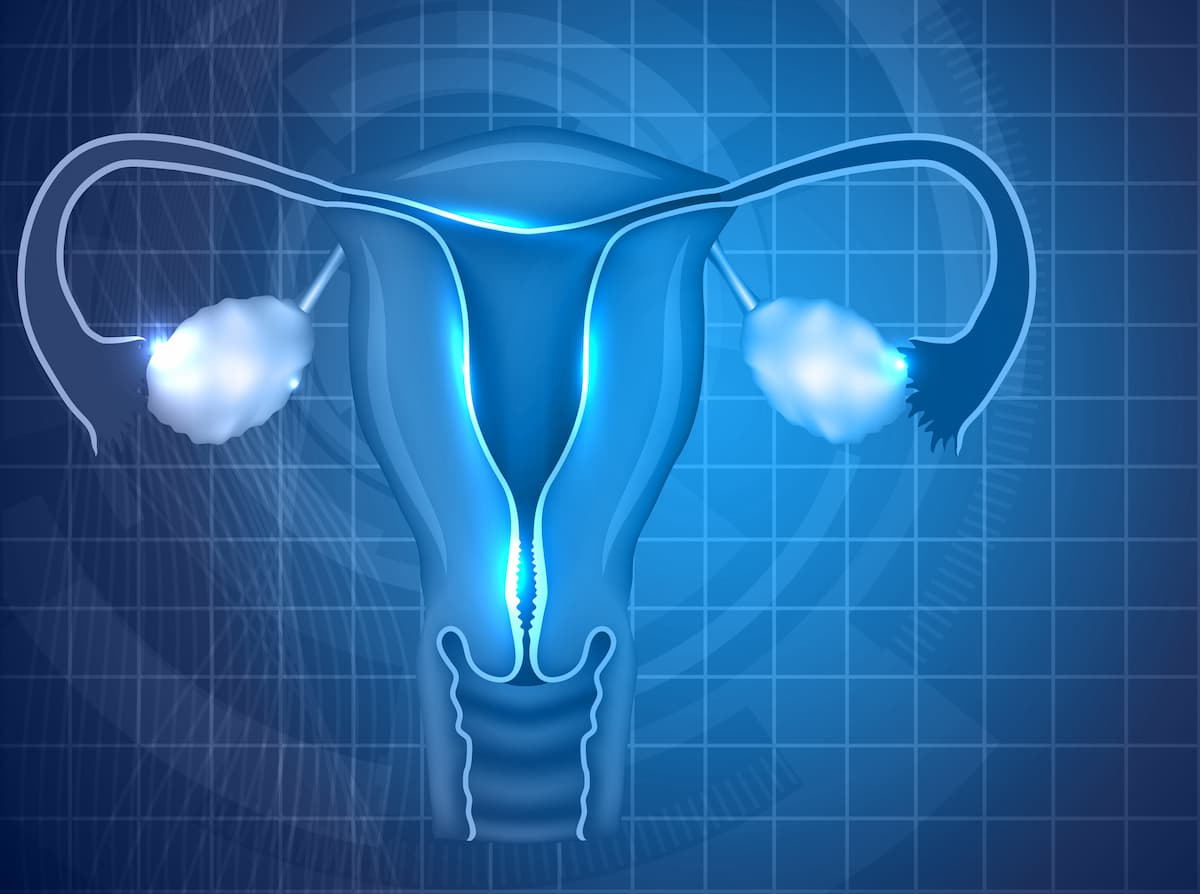Induction Chemotherapy/CRT Improves Efficacy in Advanced Cervical Cancer
Results from the phase 3 GCIG INTERLACE trial highlight progression-free survival and overall survival improvements with induction chemotherapy plus chemoradiotherapy for patients with locally advanced cervical cancer.
“[The OS] showed a 39% reduction in the risk of dying attributed to the induction chemotherapy,” according to Mary McCormack, PhD, MBBS, FRCR, MSc, BSc.

Induction chemotherapy with weekly paclitaxel and carboplatin prior to chemoradiotherapy improved progression-free survival (PFS) and overall survival (OS) for patients with locally advanced cervical cancer, according to results from the phase 3 GCIG INTERLACE trial (NCT01566240) presented at the 2023 Annual Global Meeting of the International Gynecologic Cancer Society (IGCS).
At a median follow-up of 64 months, there were 146 PFS events (HR, 0.65; 95% CI, 0.46-0.91; P = .013). In the induction chemotherapy plus chemoradiotherapy arm or the combination arm, the 3-year PFS rate was 75%, and at 5 years it was 73%. For the chemoradiotherapy alone arm, the 3-year PFS rate was 72%, and at 5 years it was 64%.
OS was also analyzed, with investigators reporting 109 deaths in the overall study population (HR, 0.61; 95% CI, 0.40-0.91; P = .04). In the combination arm the 3-year OS rate was 86%, and at 5 years it was 80% compared with 80% and 72%, respectively in the chemoradiotherapy arm.
“[The OS] showed a 39% reduction in the risk of dying attributed to the induction chemotherapy,” Mary McCormack, PhD, MBBS, FRCR, MSc, BSc, a clinical oncologist specializing in gynecologic and breast cancers at University College Hospital NHS Trust, said in the presentation.
A total of 500 patients were randomly assigned 1:1 to either the induction chemotherapy or the chemoradiotherapy arms. In the induction chemotherapy arm, carboplatin was given at an area under the curve of 2 along with paclitaxel at 80 mg/m2 weekly for 6 weeks.
In the standard chemoradiotherapy arm, patients were given cisplatin at 40 mg/m2 weekly for 5 weeks, external beam radiation therapy (EBRT) at 40 to 50 Gy in 20 to 28 fractions, and beam therapy given at minimum equivalent total doses of 78 Gy to point A. A 3D image-guided brachytherapy was recommended. The overall treatment time was 50 days or less and all centers had radiotherapy quality assurance.
The follow-up was every 3 months for 2 years, then every 6 months for 5 years.
Patients were stratified by site, stage, and nodal status. They were eligible for treatment if they had newly diagnosed histologically confirmed FIGO 2008 stages IB1 node-positive disease, stage II, stage IIIB, and stage IVA squamous or adenosquamous cervical cancer. Patients were also eligible if they had no nodes above the aortic bifurcation on imaging; adequate renal, liver, and bone marrow function; and were fit for treatment.
The primary end points were PFS and OS. Secondary end points included adverse effects, a pattern of relapse, quality of life, and time to subsequent treatment.
The median patient age was 46 years, 87% had an ECOG performance status of 0, and 76% were recruited from the UK. Additionally, 70% had FIGO stage IIB disease and 11% had IIIB disease, 82% had squamous cell carcinoma, 57% were node-negative, and the longest tumor diameter was 5 cm.
Six weeks of carboplatin/paclitaxel treatment was completed by 84% of patients, and the median interval from induction chemotherapy to radiotherapy was 7 days. Five weeks of cisplatin was completed by 79% of patients in the chemotherapy arm vs 68% in the combination arm, while 92% and 97% received EBRT, respectively. Of those patients who received EBRT, 97% and 98%, respectively, were given brachytherapy. The overall time on treatment was 45 days.
“As anticipated hematological toxicity was greater in the induction chemotherapy/chemoradiotherapy arm, but this did not compromise the delivery of radiotherapy,” McCormack concluded.
Reference
McCormack M, Gallardo D, Eminowicz G, et al. A randomized phase III trial of induction chemotherapy followed by chemoradiation compared with chemoradiation alone in locally advanced cervical cancer. The GCIG INTERLACE trial. Presented at the 2023 Annual Global Meeting of the International Gynecologic Cancer Society (IGCS); Seoul, Korea; November 5-7, 2023.
Giredestrant Combo Yields Positive PFS in Subgroups After CDK4/6i in ER+/HER2– Breast Cancer
December 13th 2025“The magnitude of clinical benefit was clinically meaningful and consistent, and was regardless of PIK3CA mutations or alterations in the PIK3CA pathway, duration of prior CDK4/6 inhibitors, including patients who progress within 6 to 12 months, and the choice of prior CDK4/6 inhibitors,” said Hope S. Rugo, MD.